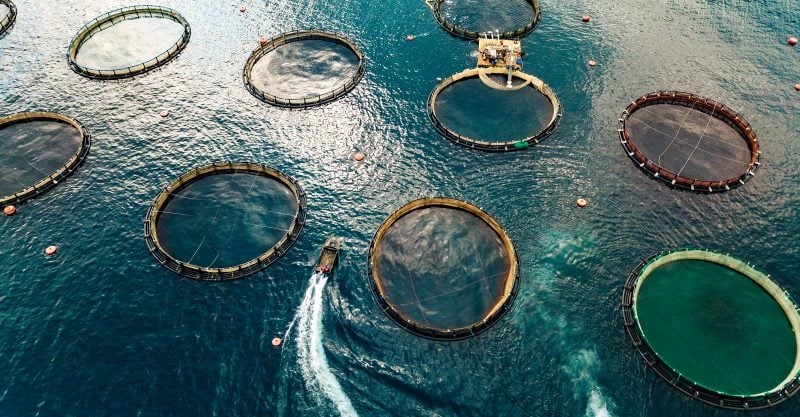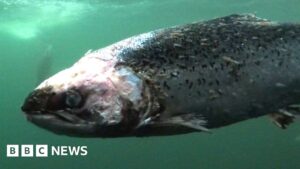Open Pen Fish Farms: What’s the Beef?
Open Pen Fish Farms:
The Story

Courtesy “Free Salmon”, Scotland
More information and resources, check out: Atlantic Salmon Federation
Scientific Reports December 28, 2024 Arthyr L. Bass et al: Infectious agent release and Pacific salmon exposure at Atlantic salmon farms revealed by environmental DNA

What is so wrong with massive salmon farms?
Brace yourself, you might want to crack a cold one (or 2) for this one. Or a whole pot of coffee as this story is a doozer. And this is about OUR Salmon, our famous Atlantic Salmon that have been abused, harmed, and exploited around the world.
These companies should be charged for profiteering and exploiting, for what they have done to one of the most important fish in our oceans.
Atlantic salmon is the most popular fish on North America’s dinner tables. We’re told it is healthy and environmentally friendly. The reality is disturbingly different. These “massive ocean feedlots” where millions of farmed salmon are crammed into parasite-plagued cages and fed a chemical-laced diet, threaten our fragile coasts in Nova Scotia … THIS IS OUR BEEF!
If you haven’t already, check out our page full of videos explaining what open pen salmon farms are doing to our health, our communities and our coast.
- The fish pens can hold up to 200,000 fish each. Some fish farms have eight to 10 pens. That means factory fish farms can house up to 2 million fish, which is more fish than the wild Atlantic salmon population of the entire world.
- Farmed fish are raised on a diet of processed, high-fat, high-protein feed that can include everything from genetically engineered soybeans and pesticides, to polychlorinated biphenyls (PCBs) and dioxins, to antibiotics. The dry pellet feed given to farmed salmon is what makes it so toxic to you when you eat it. See this article
- According to The Guardian: “The waste of wild fish swimming around is not harmful, but the waste of hundreds of thousands staying in the same spot is.”
This article in The Defender explains more of the gory details here .

- The toxins in farmed salmon feed accumulate in salmon fat. One study that tested 700 salmon samples collected from around the world, found PCB concentrations in farmed salmon are, on average, eight times higher than in wild salmon.
- Because farmed fish lack the basic survival genes that wild fish have, mating with wild fish will decrease the survivability of the already endangered wild population, according to another article published by the Gardian.

Sea lice are a major problem for farmed salmon. They eat the salmon’s skin, causing large lesions that often lead to hypothermia and death. This has now become a problem for wild salmon, too.
- In 2017, a fish-farm spill, owned by Cooke Aquaculture Pacific, occurred off Cypress Island when a net pen holding 263,000 salmon gave way. The full story is here.
Atlernatives exist. Land-based, closed-loop fin fish farms provide clean, healthy fish without damaging sensitive ecosystems.
